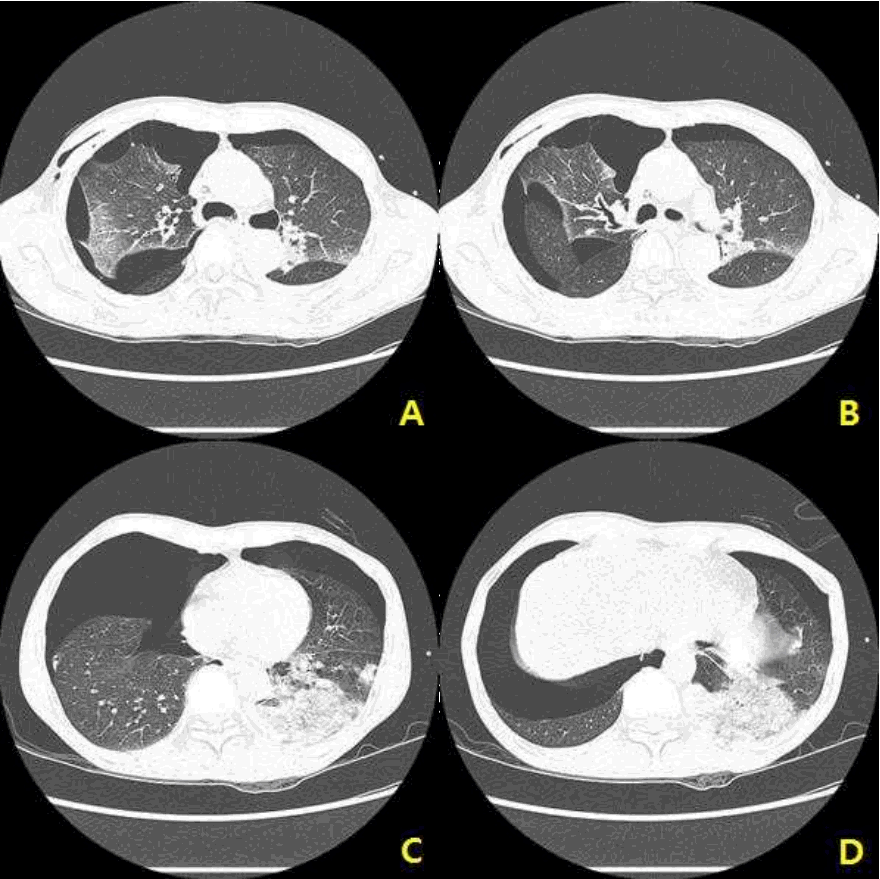CASE
A 47-year-old man presented to the emergency department after falling from a fifth floor height. His vital signs were systolic blood pressure 60 mmHg, pulse rate 111 beats/min, respiration rate 31 breaths/min, body temperature, 36.4℃, and oxygen saturation 96%. The injury severity score was 29, revised trauma score 5.15, trauma and injury severity score 74.8%. His arterial blood gas analysis was pH 7.35, pCO2 29 mmHg, pO2 75 mmHg, hemoglobin 16.7, SaO2 94%, lactic acid 11.8 mmol/L, and base excess -8.0. Supine chest radiography showed a right-sided pneumothorax with a deep sulcus sign (Fig. 1.). The axial views of chest computed tomography (CT) demonstrated a large pneumothorax with multiple fibrous bands between the parietal and visceral pleura of the upper lobe of the right lung (Fig. 2.). The coronal view of chest CT more clearly showed the deep sulcus sign seen in the chest AP (Fig. 3.). The deep sulcus sign disappeared after tube thoracostomy (Fig. 4.).
DISCUSSION
The deep sulcus sign on a supine chest radiograph is an indication of a pneumothorax [1]. The costophrenic angle is abnormally deepened when the pleural air collects laterally, producing the deep sulcus sign [1]. Gordon [1] first reported a deep sulcus sign as a sign of pneumothorax in 1980. Then, the deep sulcus sign was reported on the right side in a trauma patient [2-4]; it is rarely reported on the left side [5]. A deep sulcus sign also was reported in nontraumatic patients [6], and Wang et al. [7] reported a deep sulcus sign caused by free air in the abdominal cavity.












